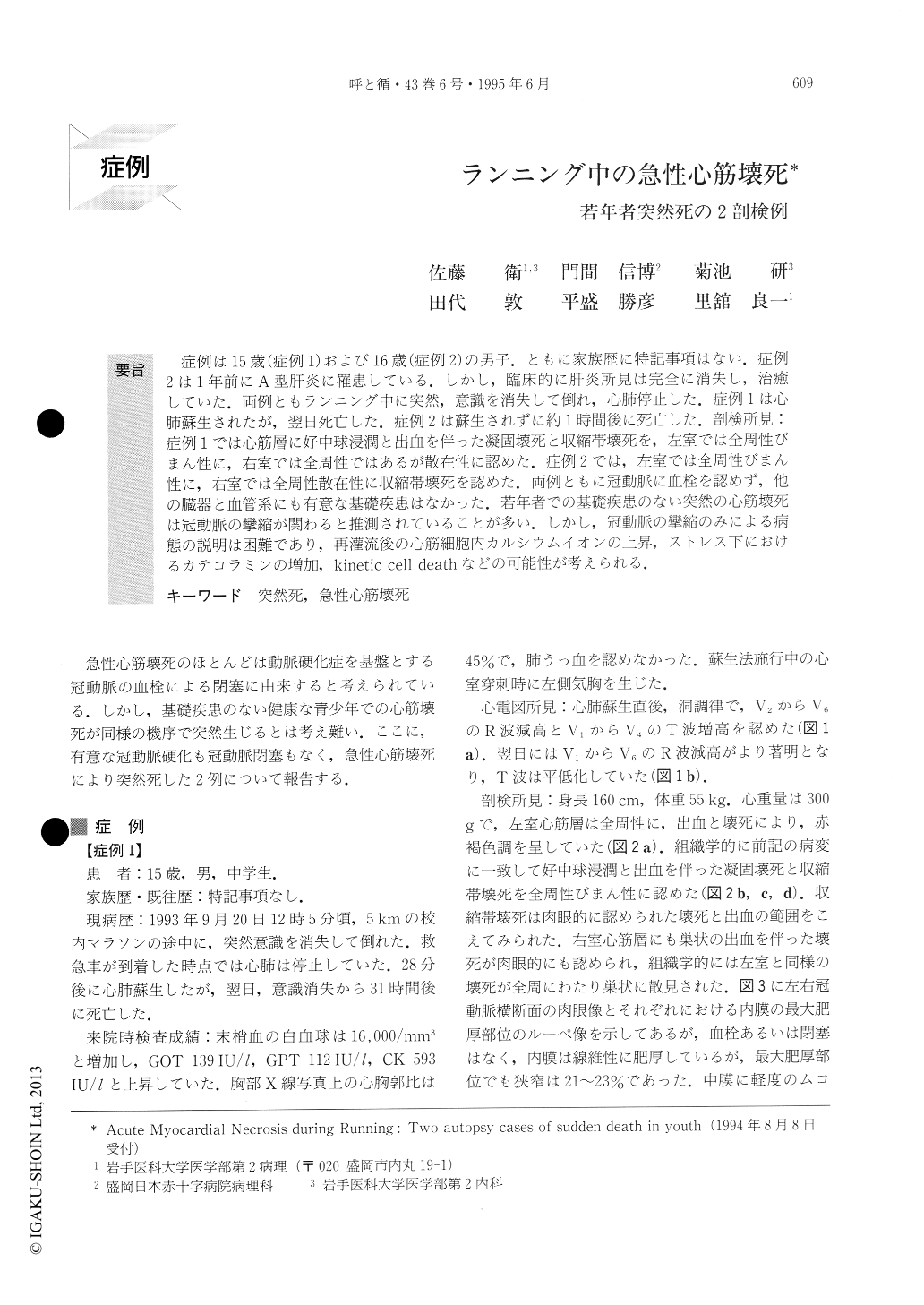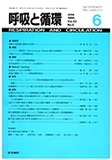Japanese
English
- 有料閲覧
- Abstract 文献概要
- 1ページ目 Look Inside
症例は15歳(症例1)および16歳(症例2)の男子.ともに家族歴に特記事項はない.症例2は1年前にA型肝炎に罹患している.しかし,臨床的に肝炎所見は完全に消失し,治癒していた.両例ともランニング中に突然,意識を消失して倒れ,心肺停止した.症例1は心肺蘇生されたが,翌日死亡した.症例2は蘇生されずに約1時間後に死亡した.剖検所見:症例1では心筋層に好中球浸潤と出血を伴った凝固壊死と収縮帯壊死を,左室では全周性びまん性に,右室では全周性ではあるが散在性に認めた.症例2では,左室では全周性びまん性に,右室では全周性散在性に収縮帯壊死を認めた.両例ともに冠動脈に血栓を認めず,他の臓器と血管系にも有意な基礎疾患はなかった.若年者での基礎疾患のない突然の心筋壊死は冠動脈の攣縮が関わると推測されていることが多い.しかし,冠動脈の攣縮のみによる病態の説明は困難であり,再灌流後の心筋細胞内カルシウムイオンの上昇,ストレス下におけるカテコラミンの増加,kinetic cell deathなどの可能性が考えられる.
Both a 15-year-old middle (Case 1) and a 16-year-old high school boy (Case 2) suddenly collapsed while running. They were admitted to a hospital. Although Case 1 was resuscitated, he expired on the following day. Case 2 expired 1 hour later. Case 1 revealed coagulation necrosis and contraction band necrosis with hemorrhage in the biventricular myocardium. Case 2 also revealed contraction band necrosis in the biventricular myocardium. No coronary thrombus was found in either boy. In these cases, myocardial necrosis is considered to have been caused by an increase in intramyocytic Ca++ after being recirculated, by an increase in catecholamine under stress or through kinetic cell death rather than by spasm of the coronary artery.

Copyright © 1995, Igaku-Shoin Ltd. All rights reserved.


